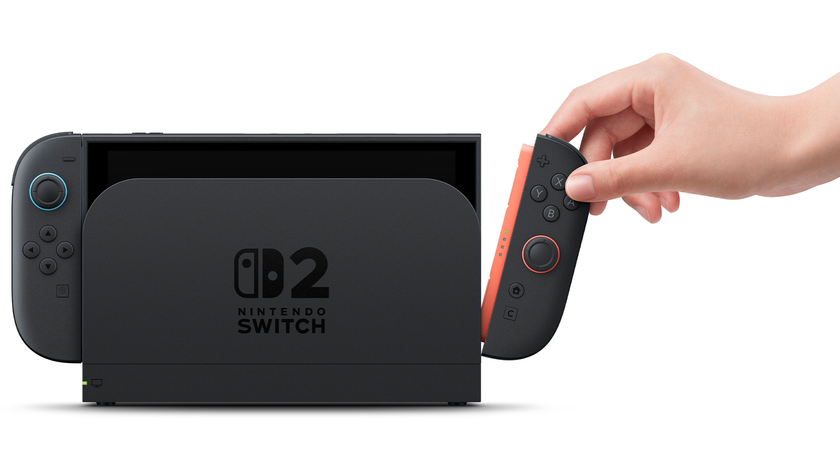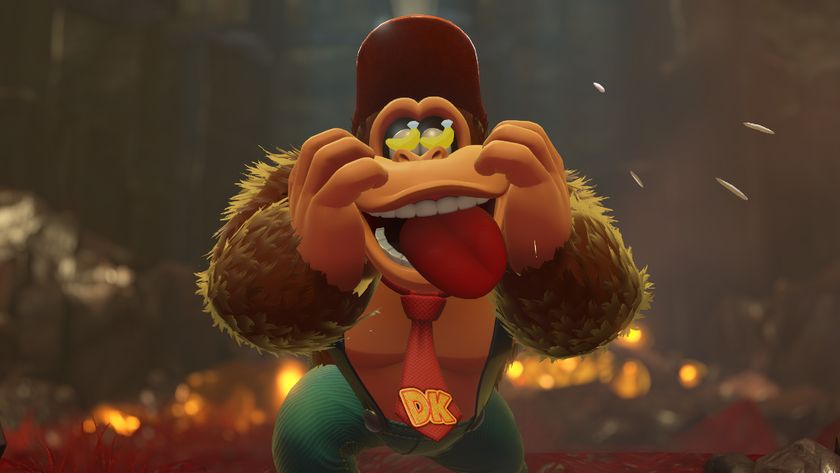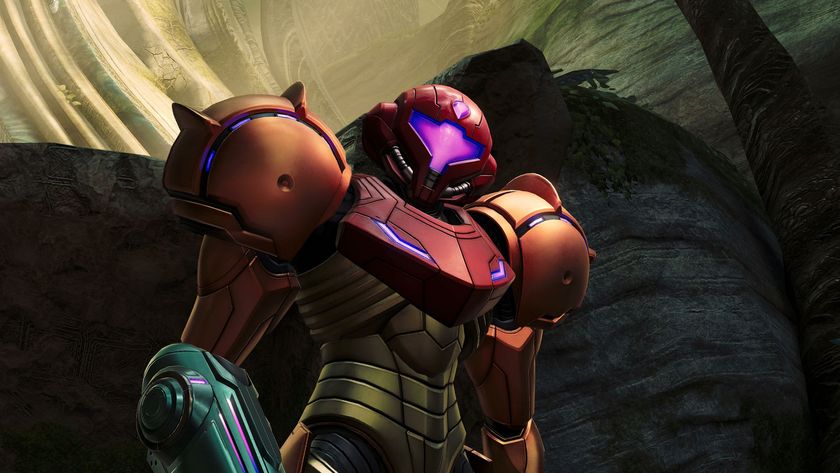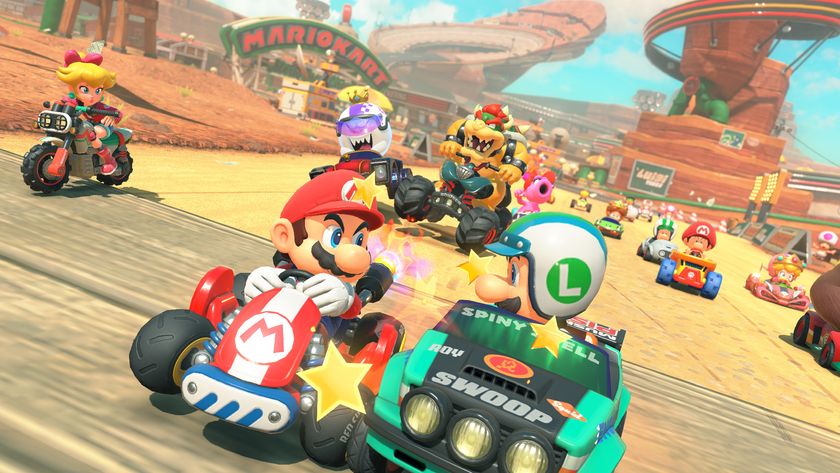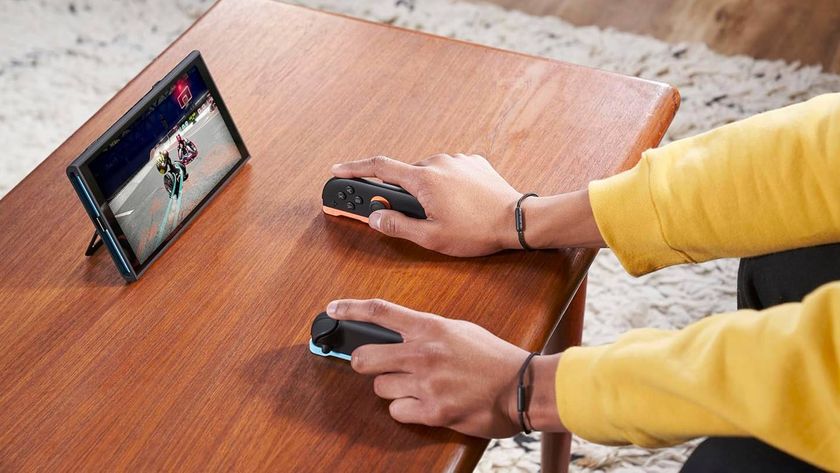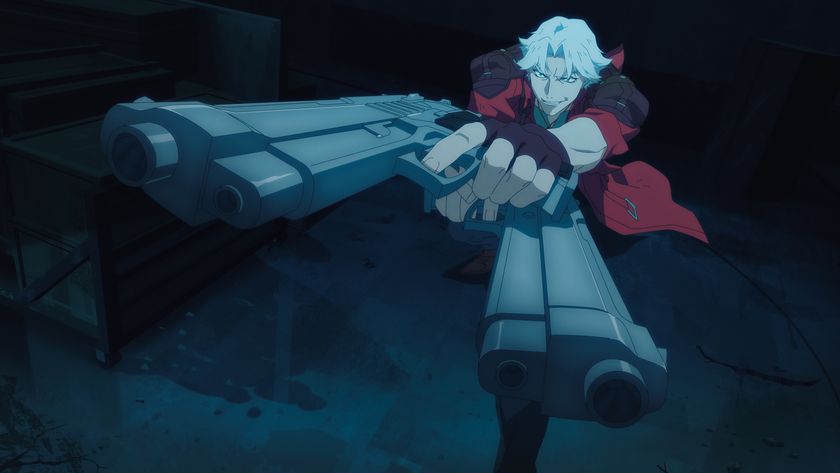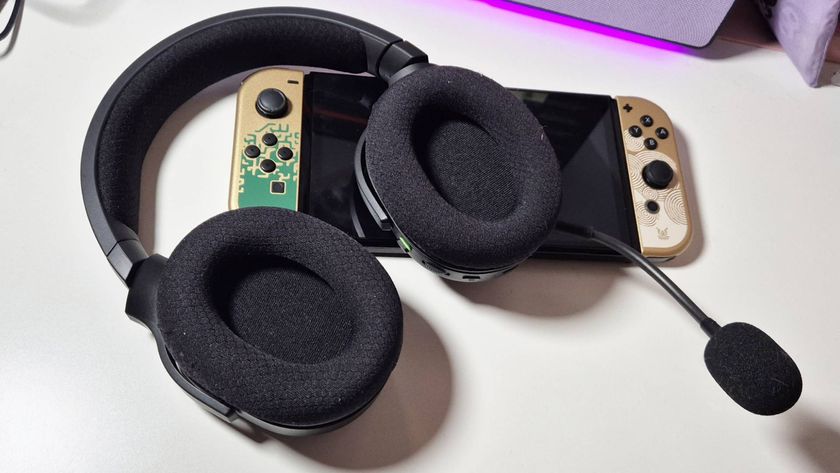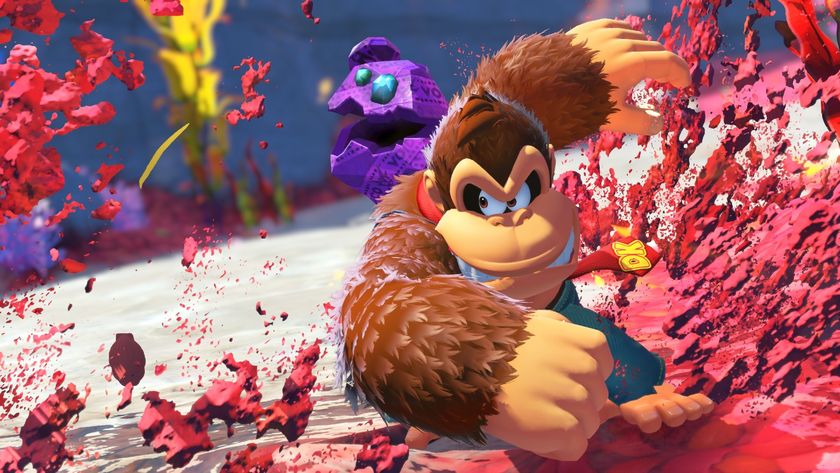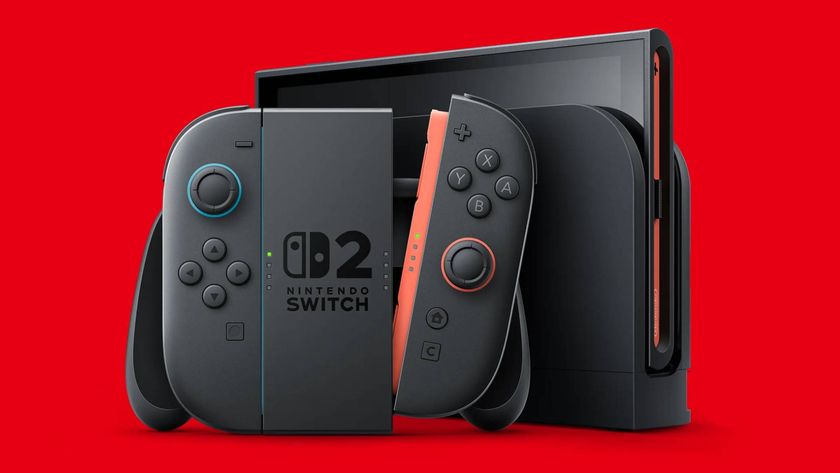What do Google's competitors think of Stadia? Not much just yet
We met with Nvidia and Blade to discuss Stadia, Google's upcoming cloud-based streaming service for games.
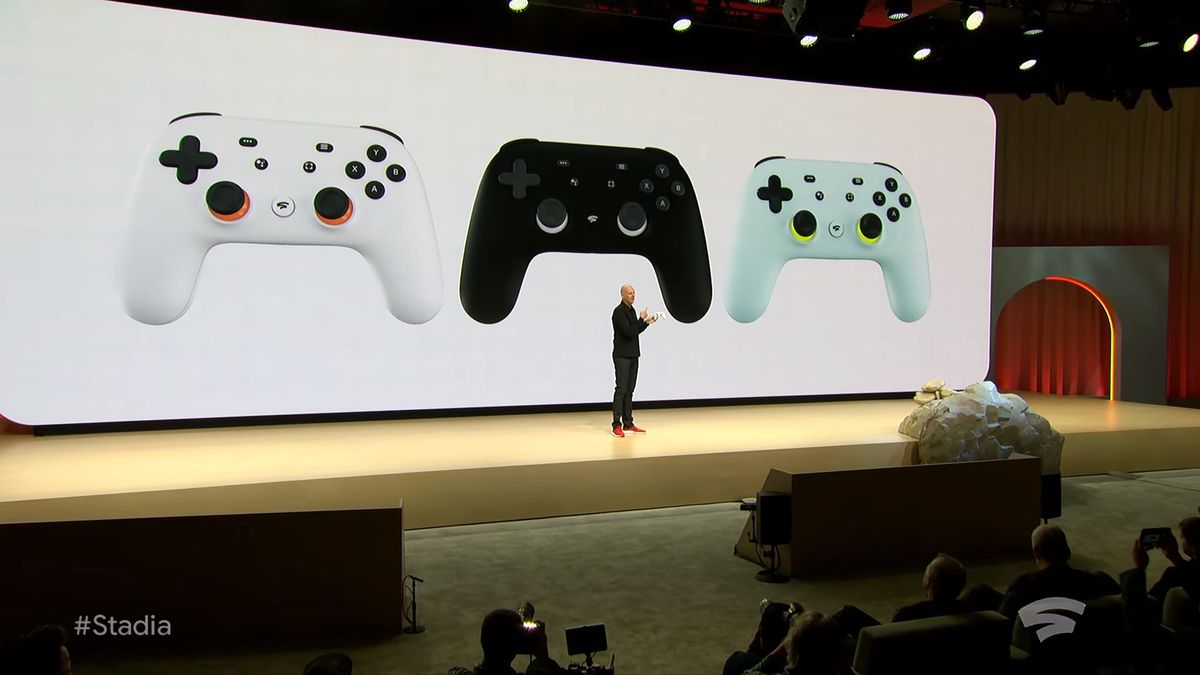
Last week, Google announced Stadia, its self-proclaimed "instantly enjoyable" game streaming service "with access for everyone". Actual details on the service are scarce at the moment: even after an hour-long press conference, we still don't know how much it's going to cost, nor do we have a firm grasp on the business model it will use. Is Google Stadia a subscription service, a free ad-supported solution (driven by monetized user data), or an a la carte marketplace for digital goods? In other words, is it aiming to be the Netflix, YouTube, or the Amazon/iTunes/Vudu for games?
Right now, we don’t know. What we do know is that Google Stadia isn't the first of its kind. Video game streaming services have come and gone, and the remaining providers are pulling out all the stops to avoid becoming the next OnLive. Once thought to represent the future of gaming, cloud-based streaming has been off to a rocky start for over a decade now. That said, since the staggered demise of OnLive, internet speeds – arguably streaming's biggest opponent – have seen a considerable boost, meaning a cloud-based reality is potentially closer than ever before. Whether we like it or not, gaming from a server locked up in some corporate data center is an attainable reality.
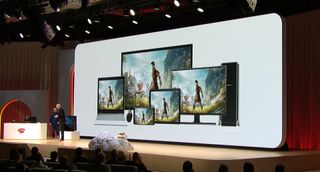
But Google isn't alone in this endeavor. While Sony acquired Gaikai and OnLive years ago – only to shutter both companies' servers – PlayStation Now still leverages the technology and resources today. What's more, the PC- and PS4-compatible service accounted for a whopping 52% of all games subscription revenue towards the end of last year. And though it's currently in beta, therefore free to demo until its official release, Nvidia's GeForce Now has an estimated waitlist one million gamers long. Smaller, independent companies like Blade are beginning to find their footing as well, with our own James Jarvis claiming its Shadow Ghost offering is better than shelling out for a regular high-end PC.
As such, I reached out to Google Stadia's three most prominent rivals – Sony, Blade and Nvidia – to discuss their reactions to the GDC 2019 keynote held on March 19. Sony neglected to comment (there's always one), but I did get in touch with representatives of Nvidia and Blade about the implications of Stadia for GeForce Now and Shadow, respectively, as well as for the gaming market as a whole.
Google Stadia vs Blade Shadow vs GeForce Now: what's the difference?
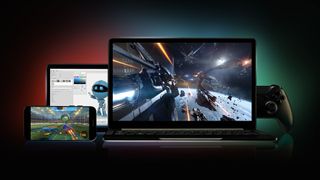
"The big difference between our model and the many newer competitors is that we're offering a full PC. That's always been one of our key differences from pretty much everyone," Shadow's eSports Solution Engineer, Patrick Varloot, tells me.
He explained that, unlike Stadia, Shadow streams a complete Windows 10 environment to the player. This means that not only will you have access to your existing games and save data on the likes of Steam, Origin, and the Epic Games Store, but it also opens up a virtually limitless catalog of new games for you to try at your leisure. "If you're on Shadow, you have your full PC," Varloot continues, reaffirming Blade's intention to keep its ecosystem as user-friendly as possible. "Anything you could do on your old laptop or your old PC you can do on Shadow. If you want to go on Facebook, if you want to play games, and if you want to do software rendering, it will all work."
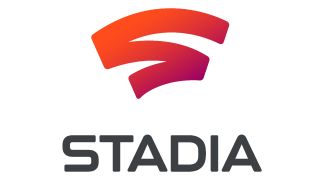
Google Stadia hands-on: You won't believe how low the latency is on this new cloud-based gaming platform
As for Stadia, the interface is unclear at this stage. Beyond our knowledge that it runs in Chrome and that you can launch games from hyperlinked YouTube video annotations, we don't know much about the UI or its capacity for open-endedness. It's safe to assume, though, that Shadow's full Windows 10 virtualization provides a less controlled environment than the alternatives. Because it's regulated by Google, Stadia will presumably deliver a stable and secure experience at the cost of end-user autonomy. In that sense, if Stadia is a platform emulating a traditional console then Shadow is a full-blown PC.
Sign up to the 12DOVE Newsletter
Weekly digests, tales from the communities you love, and more
"The thing is, I feel we don't do the same thing entirely," Varloot explains, juxtaposing his efforts at Blade with those of Google with Stadia. "We're giving a full PC experience. So I'm comparing [Shadow] to things like GeForce Now, which are out and reliable. If you're happy with the settings for those servers, it's better. It's kind of like how there is an overlap in the market between consoles and PCs, right? It's accessing video games; It's the same, but not entirely the same market."
Phil Eisler, the general manager repping Nvidia's streaming initiative, shared a similar sentiment regarding GeForce Now. Nvidia's cloud streaming platform doesn't lock users into a strictly governed ecosystem, distinguishing itself from Stadia in a number of important ways. As an example, on GeForce Now you can play supported games that you already own across a wide variety of digital storefronts. "We plan to be the place to play the latest games that you already own on existing game stores by supporting the popular PC game stores," Eisler tells me. "We're not planning to create a new store and force everybody to switch. [GeForce Now] is an open platform, supporting existing third-party game stores and all of the latest free-to-play games."
Breaking down the specs in a post-spec gaming future

Another area of focus for Nvidia is performance. Whereas Stadia's server-based x86 processor and custom AMD graphics are on par with a six- or eight-core Intel CPU and an RX Vega 56, according to our sister site PC Gamer, GeForce Now takes advantage of an 18-core Intel Xeon E5-2697 v4 processor and a more powerful Nvidia Tesla P40 graphics card. We're talking 12 teraflops of computing power from GeForce Now, as opposed to 10.7 teraflops built into Google Stadia's servers. As a result, games should look and perform better on GeForce Now than on Stadia. Or, at least, it appears that way on paper.
"As long as we're doing our thing – and we deliver it solidly – we're super confident."
Patrick Varloot
That said, optimization plays a huge role in the visual outcome and stability of our games. Given that developers will need to create games specifically for the Stadia platform, it isn't just running them in the same way your local PC might, the service could ultimately offer superior graphics and frame rates – it all hinges on developer support. Simply put, while GeForce Now may have the better specs and the more expansive library on paper, Stadia takes an unusually Apple-like approach, demanding that all of its software be tied to its hardware – it's too early to tell whether this will end up being a positive or negative, for both the developers that are having to build these experiences specifically for Stadia and for us, the players that will be playing these curated experiences. Meanwhile, games on GeForce Now work exactly the same way as they do on PC, convoluted graphics options and all.
Even so, in the future, Eisler tells me, Nvidia "[plans] to offer high-performance Nvidia GPUs with the latest technology like RTX ray-tracing delivered from the cloud". Although incorporating 'next-gen' features like ray-tracing could give Nvidia a leg-up on the competition, in an enterprise as dynamic as cloud streaming, Google, too, can upgrade Stadia's hardware whenever it wants – the company is already boasting that the platform will be capable of streaming games at 120 frames-per- second and in 8K, when the technology is there to support it. Besides, if Crytek can manage real-time ray tracing on an AMD Vega 56 graphics card, who's to say Google, and its myriad game developer partners, can't do the same?

Still, on top of paying for your own games, when it finally exits beta, Nvidia plans to introduce an hourly fee for GeForce Now. Play a game for 20 hours and the company will charge you $25, amounting to $1.25 per hour. By all means, Nvidia could backpedal depending on Stadia's final pricing. Given the buzz surrounding Google's first gaming platform, seeing Stadia shape and change the business models of its opponents wouldn't come as a surprise to me – in fact, I'd say it's to be expected. Shadow, on the other hand, employs a more traditional subscription model, starting at $29.95 per month. Unlike Google, however, Nvidia and Blade aren't what you'd call household names, particularly in the eyes of the mainstream, and so it remains to be seen how much market penetration these services will ultimately have across the wider industry.
Contrary to what you might expect, this doesn't worry Varloot all that much. In fact, he stressed to me that healthy competition is important with burgeoning new technology such as this. "As long as we're doing our thing – and we deliver it solidly – we're super confident," he says, going on to justify Blade's decision to enter the market. "Otherwise, why start a business? Competitors are a thing, right? You're not going to start a business if you don't think your model is the best. No one shares a model; If they [Google] came out and said, 'We're doing this single thing the same way,' we'd be like, 'That looks really similar.' But there are some pretty big differences [between services], so we're happy with our model."

Until we learn more about Google Stadia, both Nvidia and Blade were reluctant to dive deeper into specifics. For good reason, too. Because for whatever the future holds for Stadia, GeForce Now, Shadow, and the inevitable slew of forthcoming cloud-based game streaming contenders, one pivotal question remains: No matter how low the latency, will cloud gaming ever reach the experiential heights of a local gaming PC or console? And could this ultimately mean for PS5 and Xbox Project Scarlett?
Perhaps it's too early to say, but with Google pushing for a summer 2019 rollout of Stadia in some of its biggest territories, I'm going to guess that it won't take long before we start to see seismic shifts in this corner of the industry. Nvidia and Blade may offer but an early glimpse into the promise and potential of cloud gaming, but there's still every possibility that Google's Stadia will change the game entirely.
Gabe Carey was a Senior Writer at 12DOVE. In his time with us, Gabe focused on news and features coverage, with a particular focus on gaming hardware. He left GR+ in 2019 and now works as the commerce editor-in-chief for GO Media.

